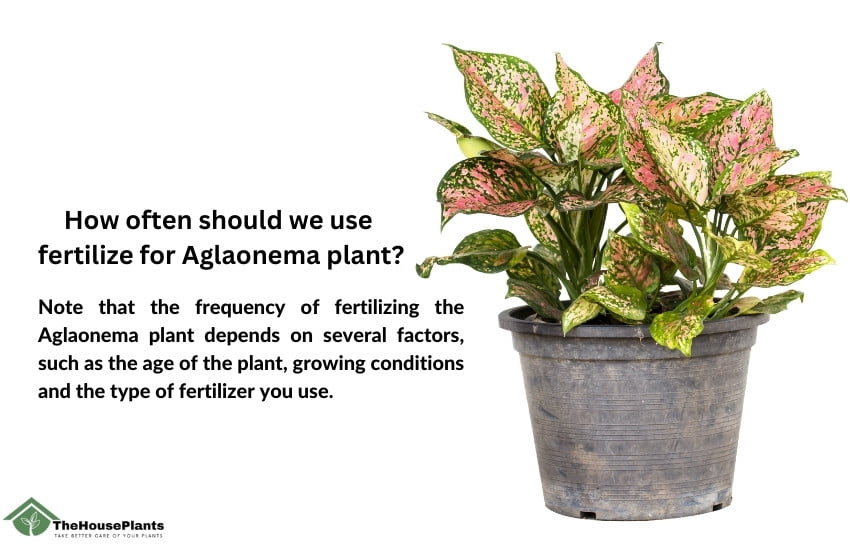Aglaonemas also known as Chinese Evergreens, are hugely popular houseplants that add a decorative touch to any indoor space with their colorful patterned leaves. Getting the right balance of nutrients is key to keeping these plants looking their best. While fertilizer can certainly help an aglaonema thrive it’s also easy to overdo it. Read on as I cover the dos and don’ts of fertilizing your aglaonema plant.
Why Fertilize Your Aglaonema?
Applying fertilizer provides important nutrients to help aglaonemas grow strong and produce vibrant foliage. Specifically
-
Nitrogen encourages lush, green growth and healthy leaves.
-
Phosphorus aids in root, shoot, flower and seed development.
-
Potassium promotes overall plant vigor and disease resistance.
-
Micronutrients like iron are essential for processes like photosynthesis.
Without adequate fertilization, an aglaonema may exhibit signs of deficiency such as small leaves, yellowing, poor growth or loss of lower leaves. Fertilizing at the right times ensures your plant gets what it needs.
When to Fertilize Aglaonema
I recommend fertilizing aglaonema houseplants during the active growing season of spring through summer:
-
Begin light fertilization in early spring when you notice new growth emerging.
-
Fertilize every 2-4 weeks from spring into early fall.
-
Discontinue fertilizer for the season by late fall or early winter.
Actively growing plants can better utilize the nutrients while fertilizing during cooler winter months can damage roots or cause chemical buildup in the soil.
How to Fertilize Your Aglaonema
When fertilizing your aglaonema, follow these dos:
-
Use a balanced liquid fertilizer diluted to 1/2 or 1/4 strength.
-
Alternate between using a general houseplant fertilizer and one specially formulated for foliage plants.
-
Add the fertilizer to your watering can and apply to moist soil to help absorption.
-
After fertilizing, flush the soil monthly with plain water to avoid salt buildup.
-
Test the soil yearly and amend if nutrients are lacking.
-
Watch for signs of over-fertilization like burnt leaf tips.
What to Avoid When Fertilizing Aglaonema
Just as important as proper fertilization is knowing what not to do:
-
Don’t use full strength fertilizer which can burn the roots.
-
Avoid fertilizing too often which causes buildup. Once a month is sufficient.
-
Don’t apply dry fertilizer directly to the leaves which can scorch them.
-
Don’t fertilize after October or before March when growth has slowed.
-
Never fertilize a stressed plant or dry soil lacking moisture.
-
Don’t use a nitrogen-heavy fertilizer which causes excessive foliage growth.
-
Prevent leaching by watering thoroughly before and after fertilizing.
By following the dos and avoiding the don’ts, you can fertilize your aglaonema confidently. Observe your plant’s needs and adjust your feeding schedule accordingly.
Troubleshooting Common Fertilizer Issues
If you notice any of these symptoms, improper fertilization may be the cause:
-
Burned, dry leaf tips – Likely caused by using too much fertilizer.
-
Minimal new growth – Could indicate a need for more fertilizer.
-
Paler leaves – May signify a nutrient deficiency requiring amendment.
-
Wilting leaves or loss of lower leaves – Potential fertilizer burn or buildup.
-
Excessive leggy growth – Can signal nitrogen levels are too high.
-
Root damage or decay – Over-fertilization or incorrect usage may be to blame.
Adjust your fertilizer amounts and techniques if you see signs of distress. Flush the soil to wash away buildup if necessary.
FAQs About Fertilizing Aglaonema
Here are answers to some common fertilizer questions:
How often should I fertilize my aglaonema? Fertilizing every 2-4 weeks during the growing season is sufficient. Avoid over-fertilizing.
What’s the best fertilizer for aglaonema? A balanced liquid houseplant fertilizer diluted to half strength works well. Use one made for foliage plants occasionally.
Should I fertilize in winter? It’s best to refrain from fertilizing in winter when growth slows. Resume in early spring as new growth appears.
Can I use granular fertilizer on aglaonema? Only if it’s soluble and you can mix it with water to make a liquid form. Never sprinkle dry fertilizer directly on the plant.
What causes the tips of the leaves to turn brown? Over-fertilization can cause browned tips. Flush the soil to remove any buildup of chemicals.
Give Your Aglaonema a Boost
Now that you know the proper way to feed your aglaonema, you can give this gorgeous houseplant the nourishment it needs to stay healthy and produce stunning variegated leaves. Follow the recommendations covered here and you’ll master the art of fertilizing your aglaonema in no time!

Picking the Perfect Fertilizer for Your Aglaonema ‘Wishes’
In the quest for vibrant foliage, your Aglaonema Wishes craves the right diet. Liquid fertilizers are like a quick espresso shot for your plant, offering a rapid nutrient boost. Theyre easy to apply, but youll be marking your calendar for a bi-monthly date with your watering can.
Switching gears, slow-release granules are the crockpots of the plant food world. Theyre low-maintenance, breaking down over months to feed your green buddy. But theres a catch: these pellets can be fickle, releasing nutrients on their own unpredictable schedule.
Crafting Your Fertilizing Calendar
Aglaonema Wishes thrives on attention to its life cycle. During the spring and summer, its all about growth, so step up your game—fertilize every two to four weeks. But when fall hits and your plant starts to chill, its time to back off. Think of it as the plants hibernation diet; less is more.
